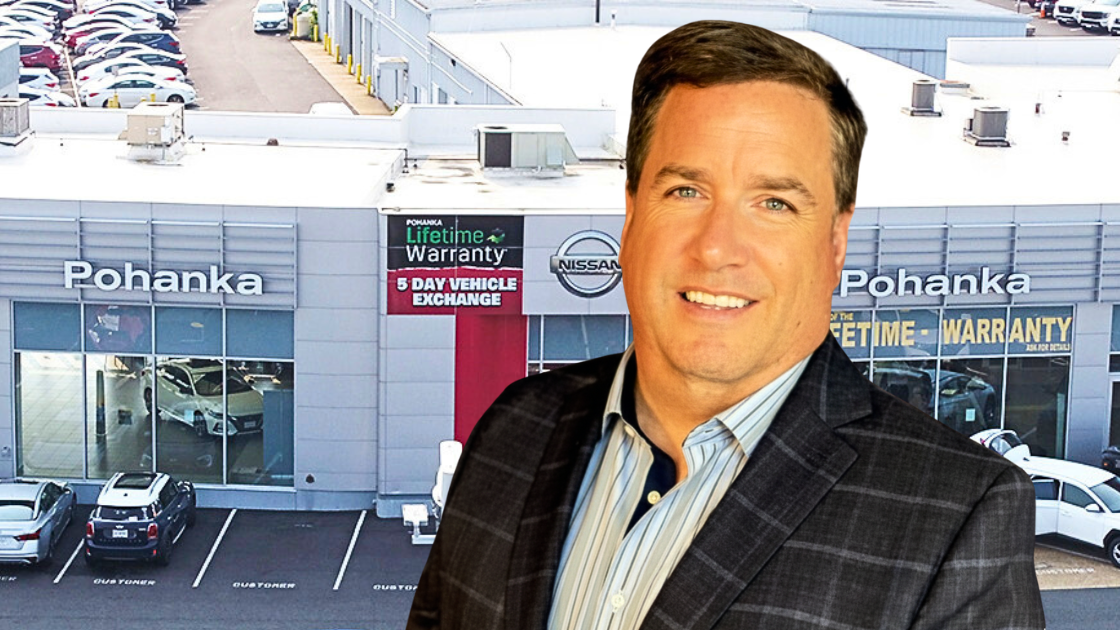
Welcome to another episode of the Car Dealership Guy Podcast.
Today’s guest is M&A expert Alan Haig, Founder of Haig Partners, who discusses why dealers are lining up to buy Stellantis stores, what the vibe shift is on dealership profitability, and how 10 million cars disappeared from American roads.

1. Franchise profits appear to be leveling.
The average gross profit per new unit appears to have stabilized, on average, across all franchises.
“Now, if you are a Ford $F ( ▲ 0.95% ) dealer…it's leveled off at a number that's kind of uncomfortable. If you're at a Toyota dealer, it's leveled off at a number that you'd love to sustain for years and years.”
There is big variation within the franchises, but across the industry, Haig Partners finds that there has been a leveling off with the decline of new vehicle volume.
2. The ‘numbers’ tell it all.
Being a “numbers” guy, Alan lets the data speak for itself.
“We're seeing a little bit lower growth profits on used cars, a little bit higher on F &I profits per vehicle retailed; a 5 % increase in fixed operations compared to 2023. When you mix it all together, have gross or net profit per store on average of $4 million for the public companies.”
That's leveled off now at twice the level of the profits per store that the industry saw in 2019 before the pandemic created such disruption.
3. It’s not about one thing when it comes to identifying the leveling factors.
Pinning down the factors that have been driving the shift is just as intriguing as the numbers.
"Some of that is because of inflation. Just the value of the goods we sell now is higher than it used to be, so we should be making more money off selling them. But some of it is a higher floor in things like fixed operations, where dealers have never made more money and they're fixed ops than they have right now.”
Alan knows of a Porsche store in the Northeast that has labor rates approaching $400 an hour – which highlights the growth in profitability of fixed operations.
4. The climate for acquisitions continues to shift post-pandemic.
Factors like capital, talent, and flexibility have changed the dynamics of acquisitions.
“Before the pandemic, we typically saw people wanting to expand in their core markets, where they already knew the customers…During the pandemic, we saw some people bend their rules a little bit and their acquisition strategies got a little bit more flexible. And now that conditions have gotten a little bit tougher, we are seeing some of those groups say, hey, I don't really have somebody good to operate that store.”
Haig Partners is seeing more divestitures now than they’ve seen in quite some time, including public companies – which could drive more dealers to focus on growing their business regionally.

1. Uber for Business - With Central, you can request a ride on behalf of your customers even if they don’t have the Uber app. If you’re ready to reduce the costs associated with maintaining shuttles and limit the liability of loaner vehicles, it's time to partner with Uber. Visit @ t.uber.com/CDGauto today.
2. Podium - @Podiumsoftware Don’t miss another lead. With Podium’s AI BDC, dealerships are seeing an 80% increase in after-hours appointments by handling leads 24/7. Instantly respond to inquiries, book test drives, and let your team focus on what matters: closing deals. Learn how Podium can help you sell more cars @ https://www.podium.com/car-dealership.
3. CDG Recruiting - Building on the success of my industry job board, I’m launching CDG Recruiting — a more hands-on, personalized automotive recruiting service. Our team has decades of experience and has successfully placed over 1,000 roles in the automotive industry. So if you’re ready to find your next rockstar employee, try CDG Recruiting today by visiting https://www.cdgrecruiting.com/.
5. Toyota, Toyota, Toyota.
Alan has high accolades for Toyota $TM ( ▲ 2.24% ) as a business model for OEMs to emulate to ensure a successful and robust relationship with their dealers.
“It just seems to work…their long-term approach to providing reliable, affordable transportation to their customers through a true partnership with their dealers. Retailers are happy to invest a lot in Toyota and Lexus, whether it's facilities…training…marketing so that the customers have a good experience when they come.”
Too often, OEMs try to work around the dealer.
6. Pumping the brakes on EV mandates could be a lifeboat for some brands.
Companies like Nissan $NSANY ( ▼ 0.69% ), struggling to survive, could regain some traction in the market if granted some breathing room on the transition to electrification.
“If you have to invest in the whole electric technology, you have to spend billions of dollars to develop those platforms. It makes it harder to invest in your ICE platforms.”
The billions being spent on EV technology could be diverted to meet consumer demand for ICE vehicles.
7. There’s no dodging the cloud of economic uncertainty looming over auto retail.
High hopes for new business growth under the Trump Administration could take longer than expected, impacting many in the automotive business.
“Right after the election, we did a poll…asked people, ‘Do you think profits in 2025 will be higher than, the same as, or less than 2024? And in that poll, 44% said that profits would be higher, 16 % said, lower, and 40 % said the same.’ Two weeks ago, I asked the same question to some people…And the response…went from 44 % saying it was going to be higher to only 16%. And worse went from 16 % to 42%.”
President Trump…wants more production in the U.S. And if that happens, it should improve our economy, but that could take six months or a year.
8. Pent-up demand adds to the cloud of uncertainty.
The industry has been operating under the assumption there would be a boom period post-pandemic.
“That hasn't happened, and it hasn't happened because the price per vehicle is way higher than it used to be.”
At some point, the people who didn't buy a vehicle in 2020, ‘21, ‘22, ‘23, or ‘24…will have to come back to the market and replace those vehicles. What will production and inventory be at that point?
9. The rewards of a lucrative franchise sale extend well beyond the money.
Herb Chambers’ decision to sell his dealership group to Asbury Automotive Group $ABG ( ▼ 1.98% ) in a deal valued at $1.34 billion yields a few rewards for Chambers, which highlights what drives many to get out of the business.
“Herb's decision-making is likely similar to many other dealers when they're getting near retirement ages, which is, I really enjoyed this business. It's been incredibly lucrative. It's provided great opportunities for me and my family. It's allowed me to give back significantly to my communities.”
At some point, it makes sense for everyone to consider, “What are you going to do with this wealth?”
10. Every merger or acquisition has its own unique proposition.
Deciding whether to sell or acquire a dealership needs to be assessed on a deal-by-deal basis.
“When we're hired, we always ask, ‘What is your objective here?’ If it's to maximize value, then, that's our tagline, maximizing value for dealers. We've got it trademarked. If it's to maximize value, then we should go out to a lot of parties and grind, because we're going to be certain to surface the best buyer, the most motivated buyer for your business.”
Clients tend to have different objectives that Haig Partners must solve in a sale or acquisition.
Did you enjoy this edition of the Podcast Recap newsletter?
Interested in advertising with Car Dealership Guy? Drop us a line here.
Want to be considered as a guest on the podcast? Add your name here.








